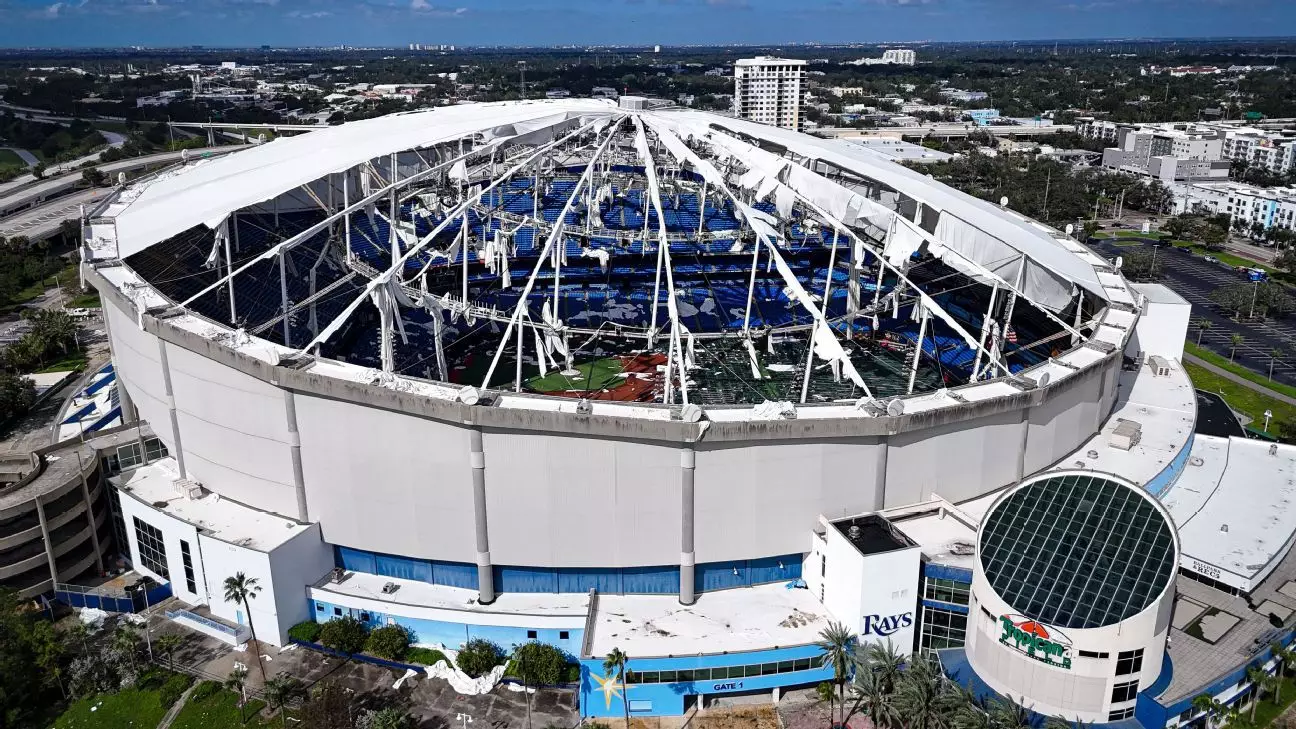The Tampa Bay Rays find themselves at a pivotal crossroads as they navigate the aftermath of severe hurricane damage to Tropicana Field in St. Petersburg, Florida. With the specter of uncertainty hovering over the team’s future in the city, the Rays have recently expressed their support for a $55.7 million plan aimed at restoring the stadium in time for the 2026 season opener. This article delves into the various dimensions of the situation, including the implications of the repairs, the challenges ahead, and the community’s overall sentiment towards the proposed redevelopment.
Hurricane Milton wreaked havoc on Tropicana Field, leaving the facility’s roof in shambles and inviting water and other elements to infiltrate the once-proud stadium. Executives at the Rays, particularly co-president Matt Silverman, have been proactive in addressing concerns related to the condition of the ballpark. In a communication directed to the St. Petersburg chief administrator, Silverman emphasized the team’s commitment to ensuring that the city fulfills its obligation to repair the stadium according to their existing use agreement. The need for swift action is underscored by the looming anxiety surrounding the logistical and revenue challenges that could arise from even a partially successful 2026 season.
As the Rays step forward with their support for the reconstruction efforts, the city of St. Petersburg is grappling with its own set of challenges. Initial proposals for the repairs were presented, but approval has been met with resistance, particularly in light of heightened costs following Hurricanes Milton and Helene. City council members are acutely aware of the financial burden on local residents and businesses still trying to recuperate from the recent disasters. Mayor Ken Welch has been vocal about his belief that a combination of insurance and Federal Emergency Management Agency (FEMA) funds should chiefly finance the repairs, yet the conversation surrounding the allocation of municipal resources remains fraught with contention.
In an added layer of complexity, Major League Baseball has indicated that it will assign its own adviser to supervise the repair project. This oversight reflects the league’s vested interest in ensuring the team’s infrastructural integrity as well as its financial viability. Given that the Rays have plans for a $1.3 billion ballpark project to secure their future in St. Petersburg, the timeline for repairs at Tropicana Field is critical. These repairs will not merely restore what was lost but serve as a temporary solution before the long-term vision of a new stadium materializes.
As preparations continue for the upcoming seasons, the Rays are set to play their 2025 home games at Steinbrenner Field, the New York Yankees’ training base. This transition highlights the difficulties the team is likely to face in maintaining fan engagement and operational stability during this interim period. However, Silverman has remained hopeful about the prospect of a “grand reopening” at Tropicana Field once repairs are complete, suggesting that there is a communal aspect to this endeavor that transcends mere athletics.
The proposed new downtown ballpark, part of the broader $6.5 billion Historic Gas Plant District development, carries heavy significance for the local community. The former Gas Plant neighborhood was a vibrant Black community before urban redevelopment efforts displaced its residents. This sensitive historical context enriches the stakes of the new ballpark’s construction, emphasizing the need for inclusive development that honors the area’s legacy while providing economic opportunities for its current inhabitants.
While the Tampa Bay Rays have taken a substantial step towards supporting the reconstruction of Tropicana Field, the path ahead is rocky and littered with intricacies. The financial hurdles, community expectations, and the desire for a new stadium loom large over the ongoing discussions. As stakeholders from various sectors rally to support the project, the lasting impacts of these decisions will reverberate throughout St. Petersburg for years to come. The future of Rays baseball hinges on a delicate balance of operational readiness, community understanding, and financial acumen in the face of adversity.


Leave a Reply